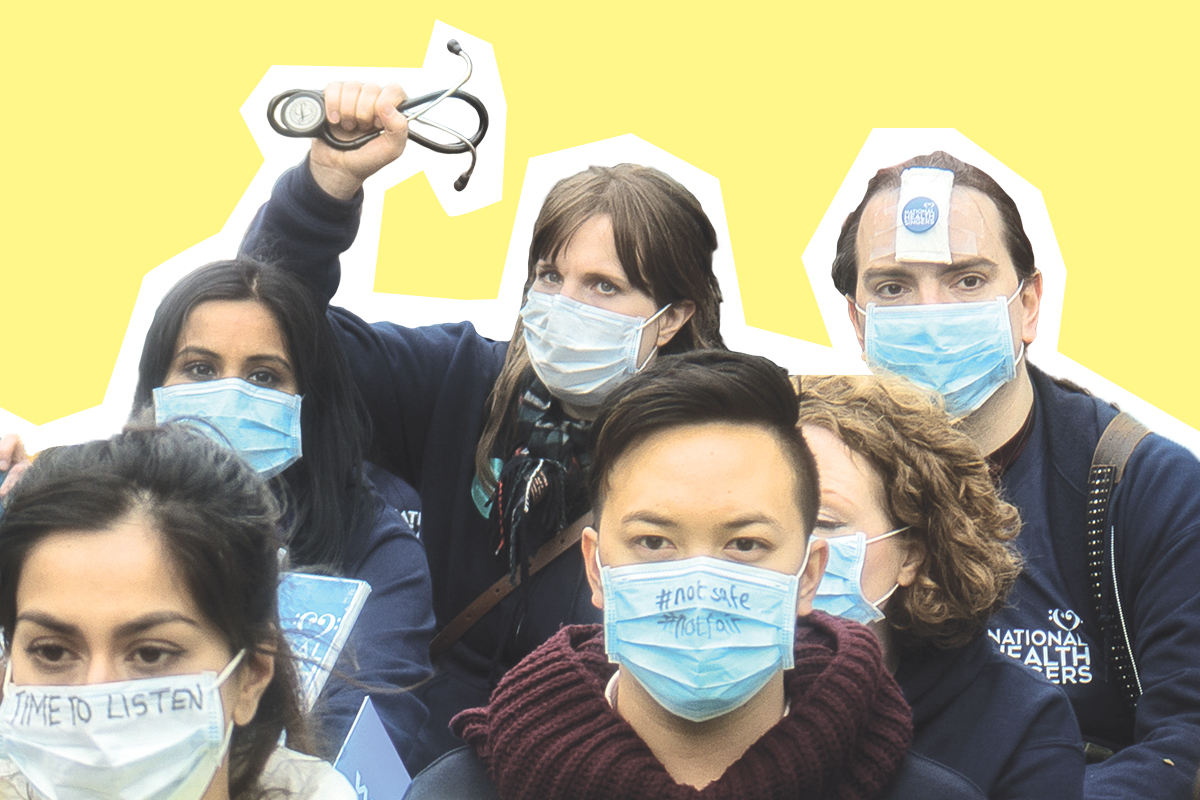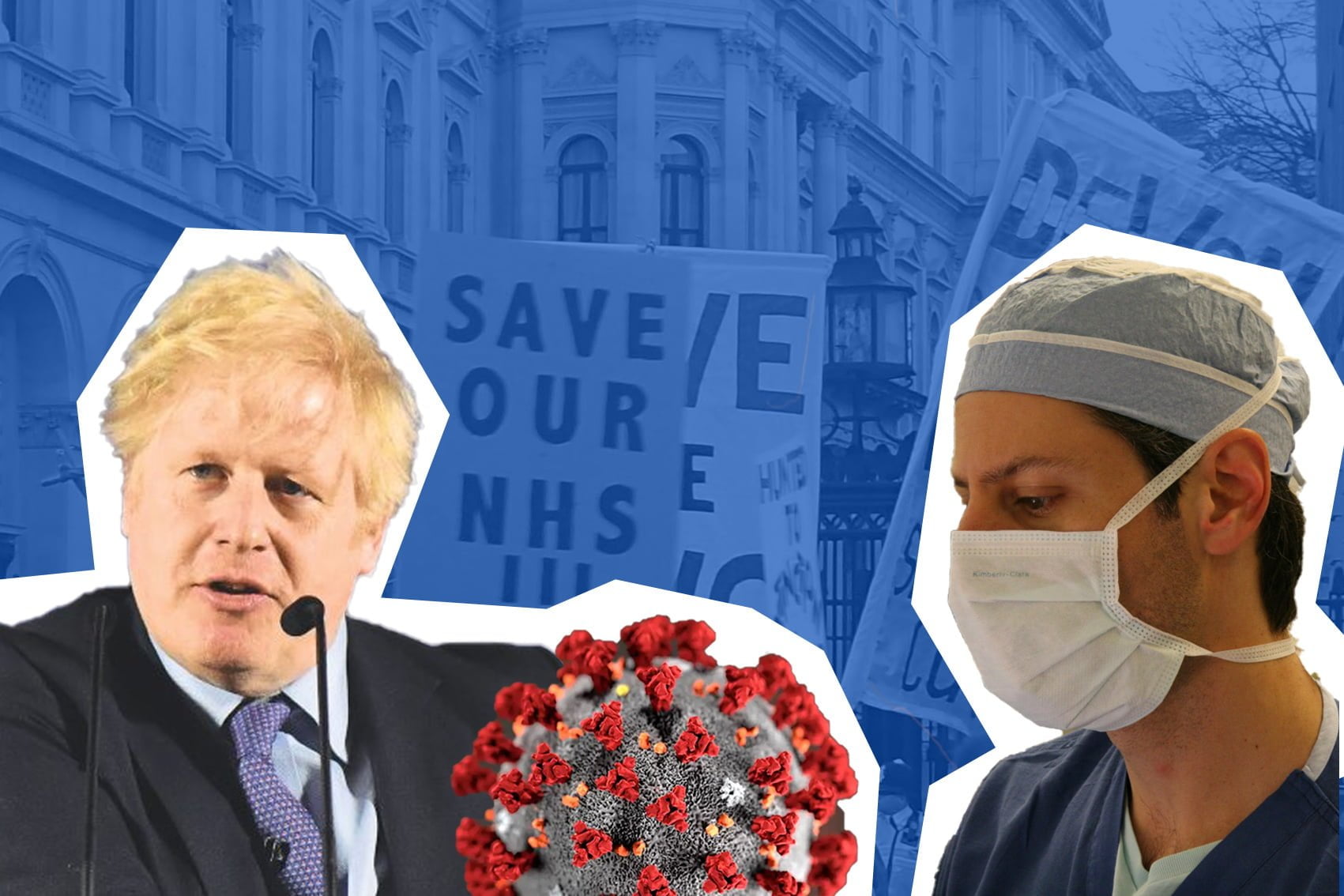New studies have uncovered vast disparities in health and life expectancy between different areas of the country. This ‘postcode lottery’ is a reflection of the clear class divide in society. Only bold socialist policies can address these scars.
Recent research by the University of Cambridge has revealed that the factors driving major health inequalities haven’t changed since the Victorian era. Despite promising great improvements to living standards, capitalism has been unable to resolve social issues such as overcrowding, malnutrition, or employment in the gig economy.
In maps recently created by the Populations Past project, glaring similarities can be seen between the spread of fatal Victorian-era childhood disease like measles, whooping cough, and diphtheria, and the distribution of COVID deaths across Britain today.
Regions such as south Wales, the north of England, and parts of east London all suffered from the highest rates of infant mortality in the 1850s, and now reflect the highest rate of COVID deaths.
In London, areas like Newham, Barking and Dagenham (dubbed the ‘COVID triangle’) have both the highest rates of overcrowding, and the highest death rates from COVID. In Newham, child poverty was 67%, and overcrowding was the worst in Britain.
‘Victorian slums’
 The spread of COVID has exposed clear class divides in our society. With overcrowded housing and insecure employment, millions of workers are incredibly vulnerable to infectious diseases. During the January peak, the COVID infection rate was 50% higher in poorer areas of the UK.
The spread of COVID has exposed clear class divides in our society. With overcrowded housing and insecure employment, millions of workers are incredibly vulnerable to infectious diseases. During the January peak, the COVID infection rate was 50% higher in poorer areas of the UK.
The most densely populated areas of the UK have had 70% more cases of COVID infections than the least densely populated areas. In conditions similar to Victorian slums, workers and families live in cramped rooms, often unable to self-isolate with COVID symptoms due to risk of loss of income.
In health economics, the ‘inverse care law’ states that those that need healthcare the most receive it least relative to need. Evidence shows that COVID disrupted the access of marginalised and vulnerable to healthcare most of all.
Inequality before COVID
 Even before COVID, non-communicable diseases such as heart disease, lung cancer, and strokes are disproportionately high in certain areas: south Wales, northern England, east London.
Even before COVID, non-communicable diseases such as heart disease, lung cancer, and strokes are disproportionately high in certain areas: south Wales, northern England, east London.
This is the infamous ‘postcode lottery’: where you live determines the healthcare you receive. In Kent, seven out of nine hospitals are rated as ‘needing improvement’, while the county also has the lowest number of ‘good’ resident and nursing homes in the country.
In part, this is due to a healthcare employment crisis. As recently as 2017, 60% of GP jobs in the north east of England were unfilled. Compounded by a vacancy rate of 1 in 10 nurses, this is a recipe for disaster.
Funding is also a systemic issue, however. Tory cuts to NHS budgets in the Midlands and the north of England have been deeper than the south. The areas which saw the highest rates of COVID were the hardest hit by austerity measures.
In the poorest areas of England, the average lifespan is seven to nine years shorter than in the richest areas. The last years of workers’ shorter lives are also spent with more illnesses.
If you are travelling on the Jubilee line on the London Underground, for every stop eastbound from Westminster, the average male life expectancy of the local population drops by one year.
These patterns and inequalities highlight the hypocrisy and callous nature of the ruling class. Workers are the source of the capitalist class’ profits, yet are treated as disposable.
Socialism: good for your health
 These inequalities are an inevitable product of the profit system. Capitalism fails time and time again to provide safe, liveable conditions for the workers it exploits.
These inequalities are an inevitable product of the profit system. Capitalism fails time and time again to provide safe, liveable conditions for the workers it exploits.
Workers are kept on subsistence wages, stumbling between bills, debt, and the risk of losing their jobs during the pandemic. Outdated, overcrowded housing is the perfect setting for the spread of deadly diseases
The argument for a nationalised planned economy is bolstered by examples like Cuba. Since the 1959 Cuban Revolution, infant mortality has dropped from 37 to 4 deaths per 1,000 live births, which is lower than the mortality rate in the USA.
But of course, a planned economy must be under the democratic control of the working class, on a world scale, in order to really flourish.
Fight for socialism
 While workers suffer the consequences of overcrowding, homes lay vacant. While NHS trusts fight to stem the tide of increased admissions, private sector parasites swim in pools of cash.
While workers suffer the consequences of overcrowding, homes lay vacant. While NHS trusts fight to stem the tide of increased admissions, private sector parasites swim in pools of cash.
With the warning signs of a third wave ignored by the Tory government, this matter is all the more pressing.
Housing and healthcare must be democratically planned according to need, not profit.
The labour movement must organise around a bold, socialist programme of demands.
Only by rallying around these measures can we end the postcode lottery and ensure, regardless of where you live, you are guaranteed high-quality healthcare.
- Fully renationalise the NHS! Expropriate the private sector parasites with no compensation!
- End the gig economy and provide safe, secure jobs for all!
- Bring the banks and construction sector under public control! For a mass council-housing construction programme!






